Pluto is defying scientists’ expectations in so many ways
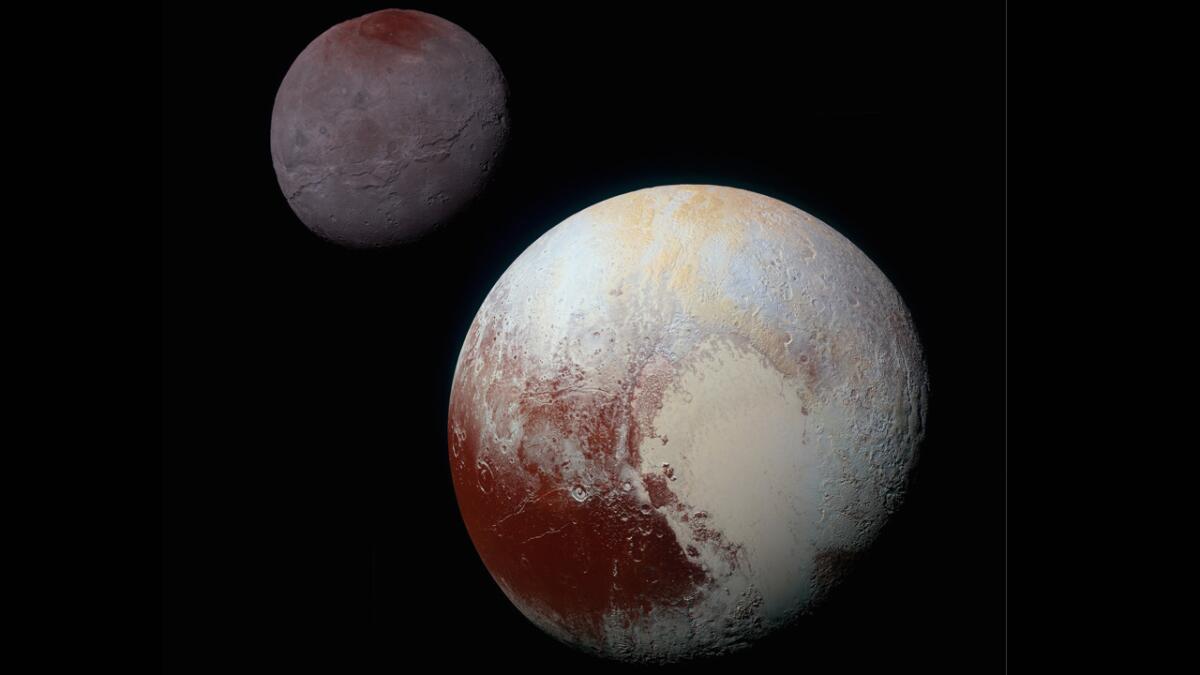
This composite of enhanced color images of Pluto, lower right and Charon was taken by NASA’s New Horizons spacecraft as it passed through the Pluto system on July 14, 2015.
- Share via
Ask Alan Stern to name the most surprising thing learned from NASA’s New Horizons mission to Pluto, and he’ll tell you to rephrase the question.
“A better question would be, ‘What isn’t puzzling or mysterious?’ Because that’s a much shorter list,” said Stern, the planetary scientist in charge of the mission. “Almost everything we see on Pluto and in its atmosphere is puzzling.”
After traveling through the solar system for nine years, the New Horizons spacecraft made its closest approach to the Pluto system last July. Equipped with seven extremely sensitive scientific instruments, it took high-resolution images of the dwarf planet’s surface features, observed its five satellites, monitored its atmosphere and measured its interaction with the solar wind — all as it whizzed past its targets at speeds of up to 30,800 mph.
A suite of five papers published this week in the journal Science illuminates some of the findings from this data, as well as some of the mysteries.
So far, the spacecraft has transmitted back to Earth just 40% of the data it collected. Scientists say most of it has defied their expectations.
NEWSLETTER: Get the day’s top headlines from Times Editor Davan Maharaj >>
“There really wasn’t much that turned out the way we thought it would,” said planetary scientist Randy Gladstone of the Southwest Research Institute in Boulder, Colo., a co-investigator on the mission.
One of the biggest surprises was the diversity of landscapes on the dwarf planet’s surface.
In a paper about the geology of Pluto and its largest moon, Charon, scientists described an ancient, heavily cratered terrain on the dwarf planet’s surface that could be 4 billion years old. But they also spotted wide, smooth plains that look as if they are still being resurfaced today.
Elsewhere, the study authors saw towering mountains of water ice measuring 2 to 3 miles high, and evidence of active glaciers made of nitrogen that are carving wide troughs across parts of Pluto’s exterior.
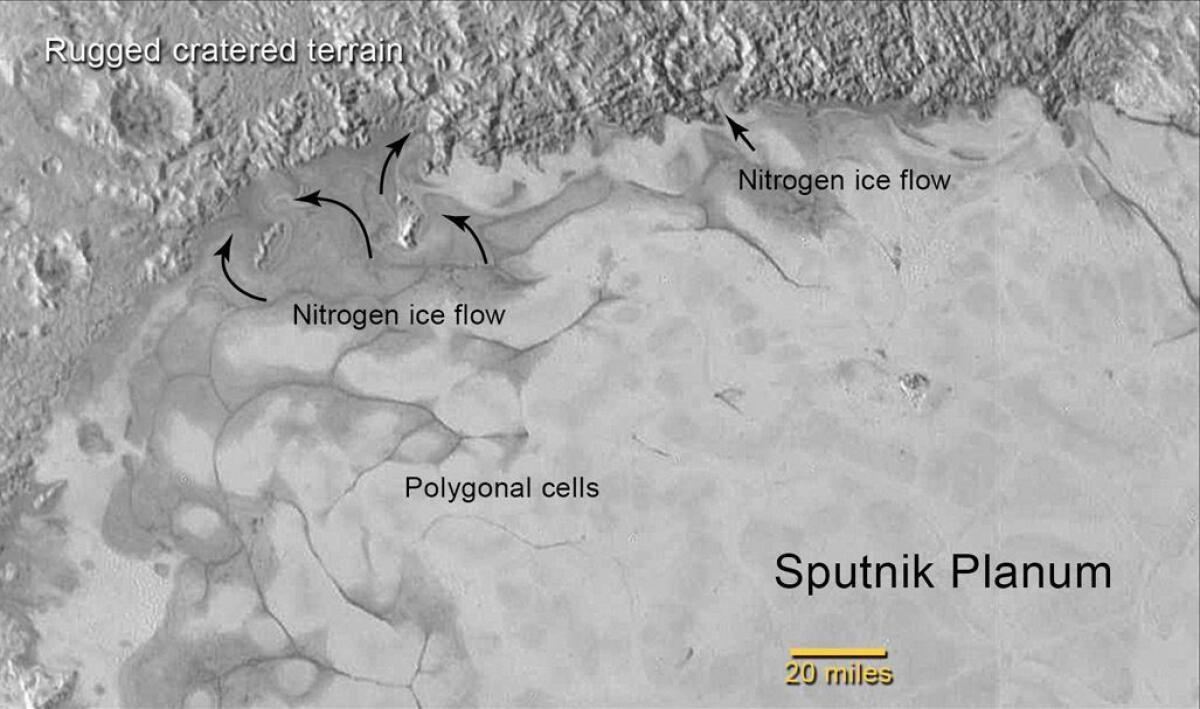
And then there are the features that no one can quite make sense of — regions with parallel ridges and grooves that the scientists are calling “washboard terrain,” and narrow ridges that are oriented north to south that have been dubbed “bladed terrain.”
“We’ve got several hypotheses floating around on the team, but there’s not a lot of convergence or consensus on how these might have formed,” said Jeff Moore of the NASA Ames Research Center in Mountain View, Calif., who led the geological study.
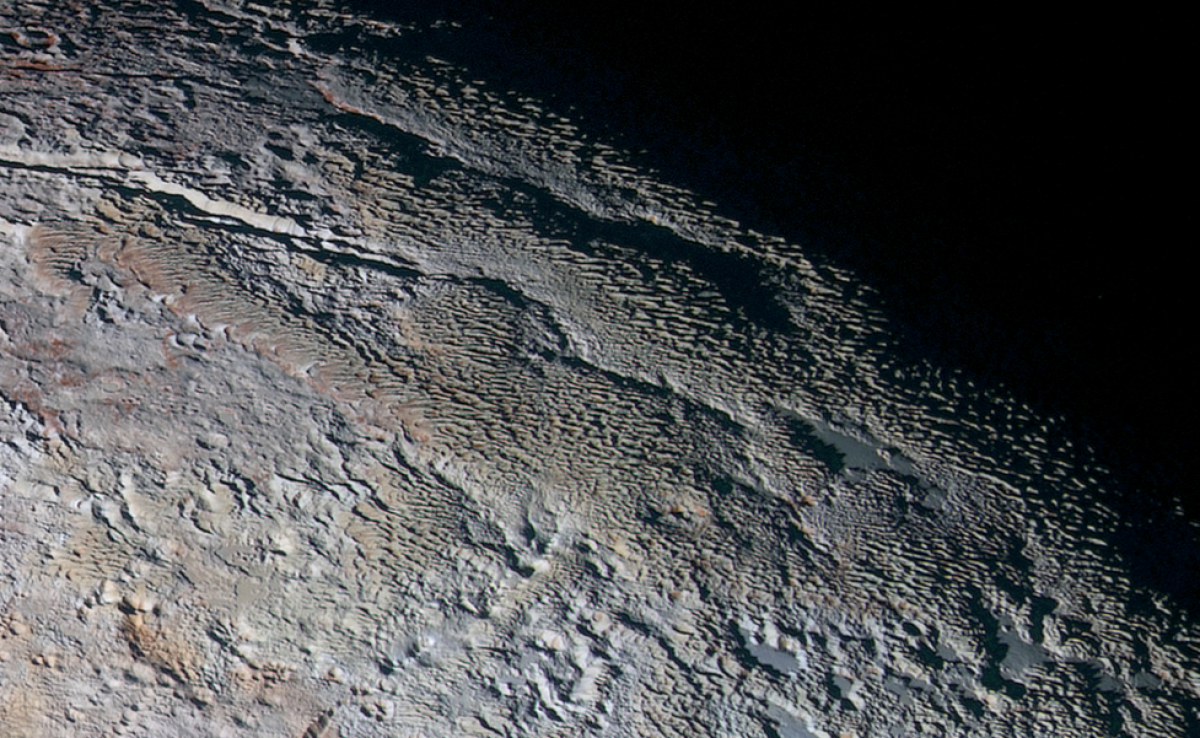
The bladed terrain of Tartarus Dorsa.
Moore explained that even though the temperature on Pluto’s surface averages just 40 degrees Kelvin above absolute zero (nearly minus-400 degrees Fahrenheit), the dwarf planet is hardly frozen in time.
The slow decay of radioactive materials embedded in the silicate rock that makes up most of Pluto’s interior produces a meager amount of heat that eventually makes its way to the surface. That energy, coupled with a bit of warmth from the distant sun, can be enough to mobilize the nitrogen glaciers and fuel other geological changes on the Pluto.
Charon, too, turned out to be significantly more geologically active than the researchers had anticipated.
“We expected it would be a boring cratered ball,” Moore said. “Instead we can see there was a lot going on geologically in its early history.”
Moore said Charon’s southern hemisphere showed more signs of recent resurfacing than the northern hemisphere. The researchers think this could be the result of cryovolcanism, a process similar to volcanoes on Earth except they emit water and other volatile compounds instead of molten rock.
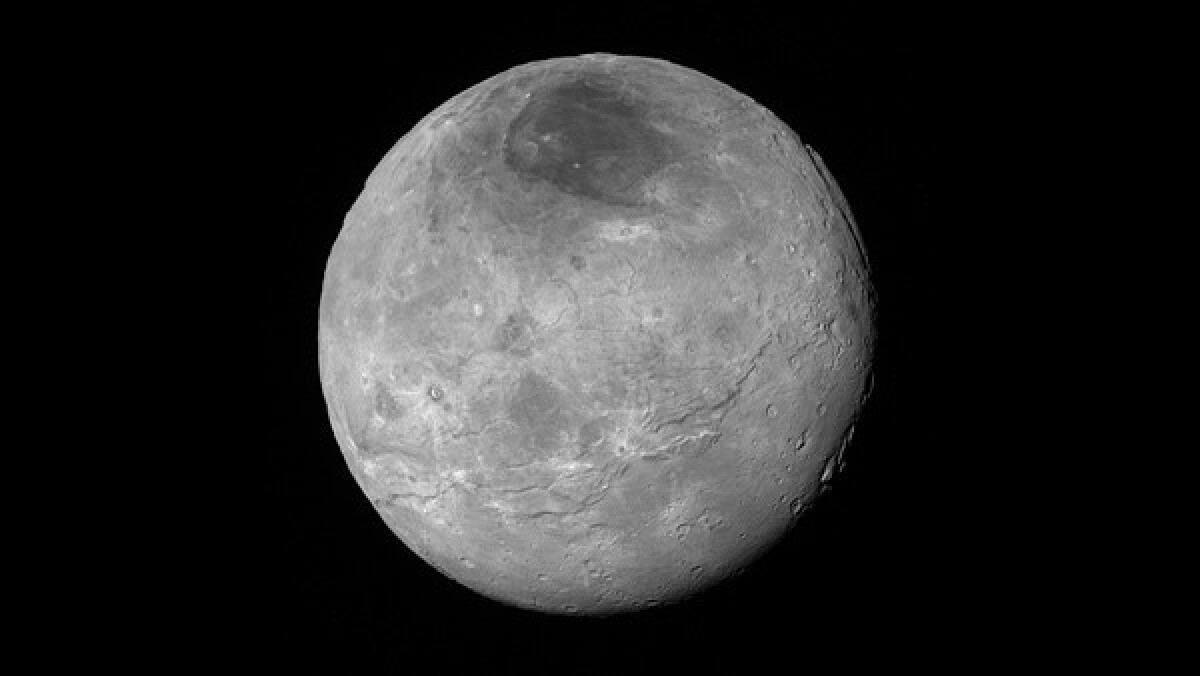
This image of Charon shows relatively smooth, fractured plains in the lower right; several enigmatic mountains surrounded by sunken terrain features on the right side; and heavily cratered regions in the center and upper left portion of the disk.
And there were more surprises as well: Hal Weaver, a co-investigator on the mission from Johns Hopkins University Applied Physics Laboratory, said his team was shocked by how reflective the surfaces of Pluto’s four small moons — Styx, Nix, Kerberos and Hydra — turned out to be.
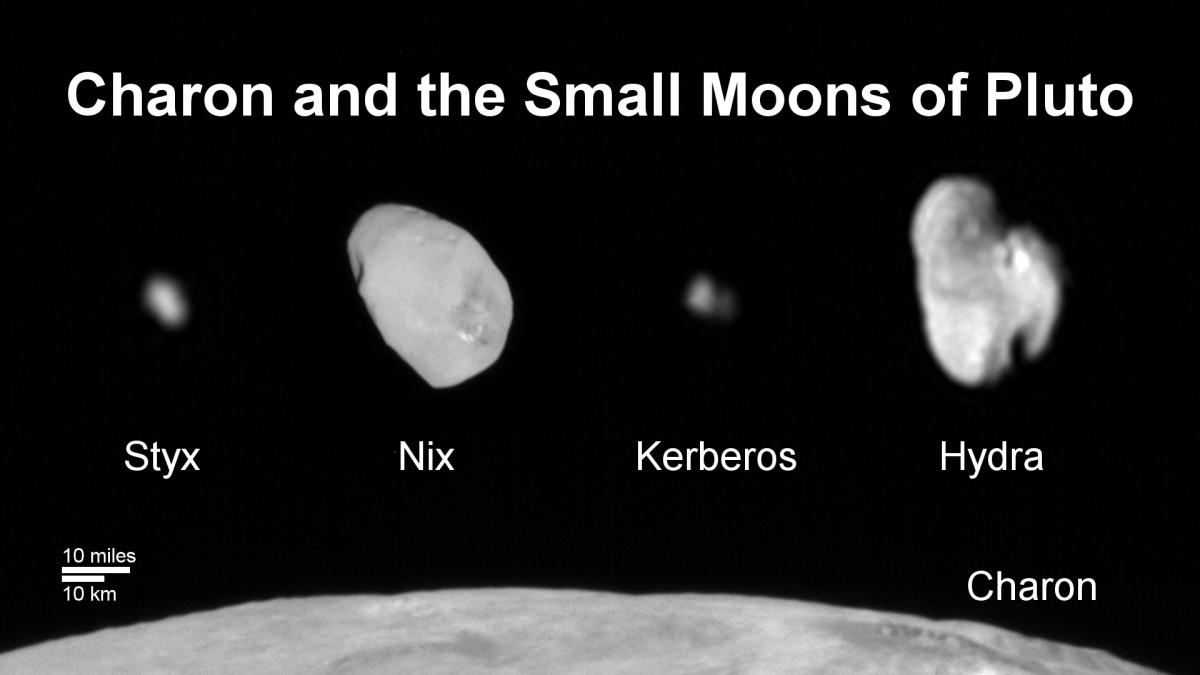
This composite image shows a sliver of Pluto’s large moon, Charon, and all four of Pluto’s small moons, as resolved by the Long Range Reconnaissance Imager on the New Horizons spacecraft.
For example, if the surface of our moon were as reflective as the surface of Hydra, it would be about 10 times brighter, he said.
Weaver said his team is still trying to work out how these surfaces have remained so bright after 4 billion years of exposure to cosmic rays, ions in the solar wind, ultraviolet light and collisions with debris from the surrounding Kuiper belt — all of which should have caused them to grow darker.
He said the group was also surprised that the rotation rates of the various moons are not even remotely in sync. The four small moons behave like spinning tops, rotating about their axes much faster than they revolve around the system’s center of mass.
Hydra, the outermost moon, is the dizziest of them all, completing a rotation in only 10.3 hours.

In this video, Pluto is shown near the center of the frame with, in order, from smaller to wider orbits: Charon, Styx, Nix, Kerberos and Hydra.
Another research team led by Gladstone determined that Pluto’s atmosphere is not escaping nearly as fast as was expected, especially considering the dwarf planet’s small size and that its gravity is much weaker than that of Earth or Mars. The New Horizons data also suggest a possible explanation for this: The atmosphere at the highest altitudes is much colder than scientists had predicted, and that could keep Pluto’s gases in place.
“It’s always fun to have your models validated, but it is way more fun to have them trashed,” Gladstone said. “Finding out you are completely wrong is a great part of science.”
As to what might be cooling off the atmosphere, scientists said they are still not sure.
New Horizons also detected about 20 thin, distinct layers in the haze on Pluto that researchers cannot yet explain.
There were other surprises as well. A look at the surface composition of the dwarf planet revealed that the changes in brightness across different regions are among the most extreme in the solar system.
“In just about every discipline, it was like, ‘Wow, holy cow, what’s up with that?’” Gladstone said.
For the most part, the researchers expressed delight that their expectations were so wrong.
“A lot of us were inspired to go into science to puzzle out mysterious things,” Moore said. “In that case, Pluto is a gold mine.”
Do you love science? I do! Follow me @DeborahNetburn and “like” Los Angeles Times Science & Health on Facebook
MORE IN SCIENCE:
Could a gene-editing tweak make pigs organ donors for ailing humans?
‘Zero pain is not the goal’ of medical treatment, doctors say
Vaccination aversion has fueled measles and whooping cough outbreaks, study finds




